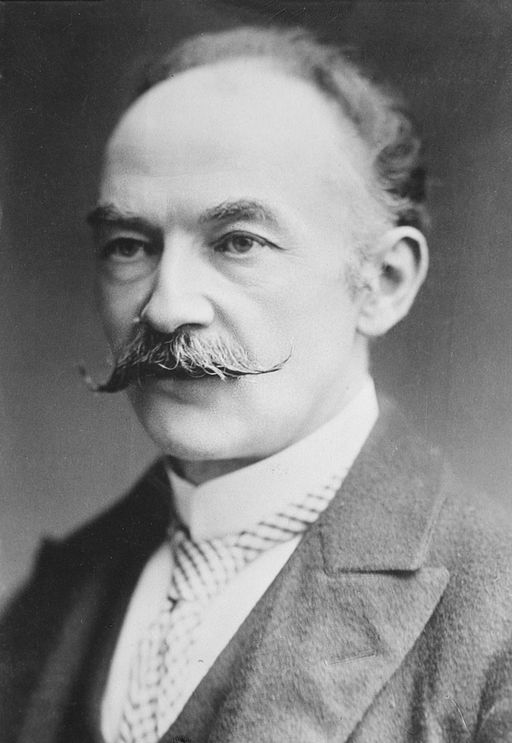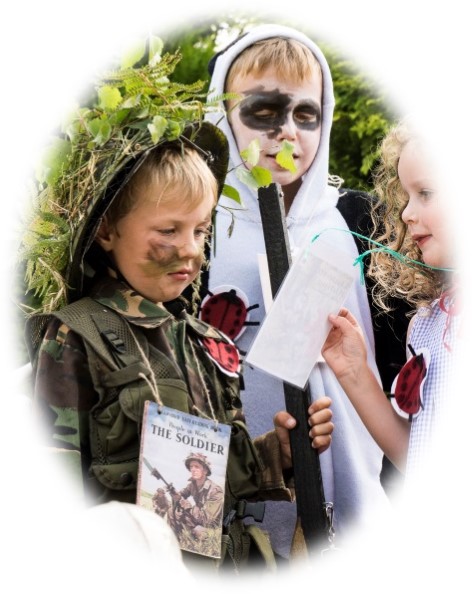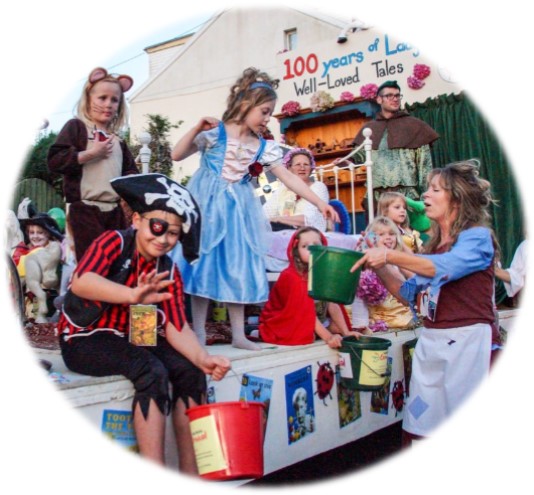
Cover artwork by Holly Davies [Year 6]
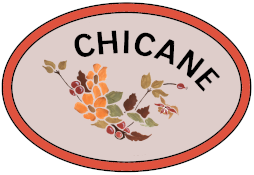 Artwork: Judie Weedon EDITORIAL
The summer has not been that good, or not until the children went back to school, but it has not dampened the enjoyment or success of the many village events - the School, Manor Hall and Church fetes, the Horticultural and Craft Show, the Sterridge Open Gardens and the Celebration of the final end of World War II.
The cover by Holly Davies and the pictures on the centre pages are the Primary School winning entries in the Horticultural and Craft Show. One winner from each of the years, the work was based on Images of the Ocean and the theme of the Show, Cities, Towns and Villages. Congratulations to them all.
Once again a warm welcome to all newcomers to the village and farewell to those who have left, we wish you all health and happiness in your new homes. We are also thinking of all those not feeling at their best just now and send good wishes to get well soon.
If you have not already thought about taking part in the Games Night at The Globe, a reminder that this is imminent, following circulation day for the Newsletter on Thursday, it takes place tomorrow, 2nd October!
In each issue I thank the contributors for their continued support and cannot stress more that without you there would be no newsletter. However, it would be lovely to welcome some new ones! How about it?
Put pen to paper or e-mail me something for the December and Christmas issue.
Those items, as well as the regular articles, should be in the Shop, Chicane or e-mailed to me as soon as possible please, and by Wednesday, 11th November at the latest. Thank you.
Judie - Ed
1

WEATHER OR NOT
We were hoping for a decent summer like
the last one but unfortunately the weather seems to have reverted to its
pattern of the previous few years and July and August were both unsettled.
The 1st of July was the hottest July day
in some parts of the country though not here.
We recorded only 18.6 Deg C, whereas at Heathrow the temperature reached
36.7 Deg C. The 30th of July was the
coldest July night on record in the south east and at Exeter airport the
temperature dropped to 2 Deg C. Here it
fell to 6.7 Deg C. We recorded a maximum
temperature of 25.5 Deg C and a minimum of 6.7 Deg C with a maximum wind gust of 24
knots. The total rainfall was 101mm much of which was spread fairly evenly throughout the month.
There is not a lot to say about
August. There were some fine days but
only nine were totally dry and these were scattered through the month. It was not the wettest August we have
recorded but with 167mm it was above average and two days were very wet with
22mm. It was another cool month with a
maximum temperature of 24.4 Deg C and a minimum of 8.8 Deg C. The strongest wind gust
was 24 knots.
Very similar sunshine hours were
recorded for the two months with 168.93 hours for July and 169.30 hours for
August.
The summer wasn't a complete washout but
it wasn't much to write home about either, although the slugs are
thriving!
The 1st September is the meteorological
end of summer, perhaps we can hope for an Indian Summer
instead.
Simon
and Sue
2
THANK
YOU
We should like to thank everyone who
helped and all of you who came to the Pig Roast at South Lee on the 25th July. Your efforts and generosity has helped
raise £800 for the North Devon Hospice and £800 for the Macmillan Nurses.
Chris
and Barbara Gubb
3
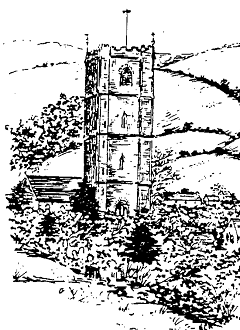 Artwork: Helen Armstead
ST. PETER'S CHURCH
Following
my comments in the August edition of the Newsletter, we have moved on to the
stage where a meeting was held in Berrynarbor Church on 7th September with a
prospective candidate for the position of a Vicar for both Berrynarbor and
Combe Martin.
The
meeting was extremely encouraging, and there will be two or three follow up
meetings with other organisations in the very near future - with the outcome
put forward to the Diocese and our new Archdeacon before any formal
announcement will be made. Berrynarbor
PCC looks forward to really positive news for the next edition of the
Berrynarbor Newsletter.
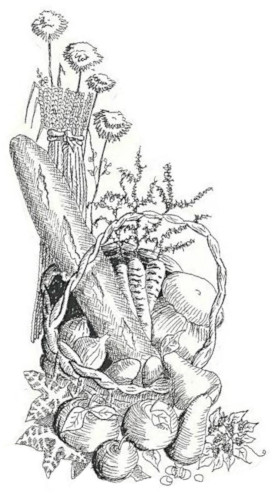
Our
annual Church Fayre was held on the 18th August in beautiful weather with the
hope of attracting as many visitors to the event as possible. However, we believe that the weather slightly
backfired on us and many visitors remained on the beaches! As a result numbers were well down on last
year but nevertheless we enjoyed a good evening and were very grateful for the
support we received. We managed to make
a profit [albeit slightly down on last year] of a very creditable £807. These
events cannot be run without all the support of so many volunteers - to the
erection of marquees in the morning and to all those who helped on the evening!
Once again, a very special thank you to
Richard Gingell for transporting the skittle alley, barbeque and other items,
and to John and Fenella Boxall for the loan of their barbeque.
We shall
be holding our Service for Loved Ones with lighting of candles on Sunday, 1st
November, at 3.00 p.m. This is a
beautiful service which we hope many parishioners and others will support. Refreshments will be served following the
service. Please note: there will be no Sunday morning service on
this day.
We shall
be holding our Remembrance Service on Sunday, 8th November starting promptly at
10.45 a.m. in the church with the laying of wreaths at the War Memorial at 11.00
a.m. With the anniversaries of the ending of the Second
World War in both Europe and Japan, it is especially important that we in
Berrynarbor pay our tribute to all those gallant men and women from Great
Britain, the Commonwealth and other European countries, who gave their lives so
that we may be free today!
The
Christmas Carol Service in the Church will be held on Wednesday,16th December starting at 6.00 p.m. for the really young
ones with the main service commencing at 6.30 p.m. From experience we have found that this format
works very well indeed, giving the young ones the opportunity to sing all their
Christmas songs and to participate in a Nativity scene without getting soaking
wet in the village square - thanks to the British weather!
The
Berrynarbor and School Choirs will be singing a selection of Carols and the
evening will end, in the usual tradition, with the serving of mulled wine and
mince pies! This service is always full to capacity, so
please come early to find a seat!
Finally,
the monthly Friendship Lunch from12.00 noon in The Globe will be held on the
last Wednesdays in October, 28th, and November,
25th. The next one will then be on the
27th January 2016! Please come along and
support this very enjoyable event.
Stuart
Neale - Acting Chairman, Berrynarbor PCC
4
 Artwork: Debbie Rigler Cook
CONGRATULATIONS - 100 YEARS YOUNG!
Our
congratulations and very best wishes to Vera Lewis, who celebrated her 100th
Birthday on the 3rd August, 2015.
Her father,
Tom Ley, in 1927 built Orchard House in the Valley, from where she and her sister
Evelyn were married. Vera and her
husband continued to live there until 1944 and she believes her daughter,
Wendy, is the only baby to have been born at the house.
Vera, who
lives in Epsom, Surrey, has been a reader and supporter of the newsletter since
it began in 1989.
5
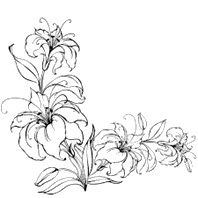 IN
MEMORIAM
A
TRIBUTE TO PERCY THOMAS
A
Berrynarbor Boy
1923 - 2015
Percy, the son of Bert and Edith Thomas
was born at Wards, Victoria Street. Combe Martin, on the 6th
February 1923. He spent a lot of time with his grandparents, Granny
and Granfer Jones who lived at Wild Violets in Berrynarbor, where the toilet
was in a shed built over the stream! He attended Berrynarbor School, moving on to
the Grammar School in Ilfracombe where he excelled, amongst other things, at cricket
which became a life-long interest.

After leaving school, Percy worked briefly
at his father's market gardening business.
He was then articled to an
accountancy firm in Ilfracombe, became a member of the Parish Council, Snooker Club
and a regular at The Globe! He and his wife Meg, had two children, Stuart
and Loraine, and when they were grown he decided a move to Canada would further
his career. In 1966 he became an auditor with the Canadian
Federal Government specialising in Inuit and Native Indian affairs,
distributing government aid to native tribes and groups in many areas of
northern Canada. His work was based in
Toronto but took him away from home for weeks at a time. He travelled in small planes often landing
on frozen lakes or desolate areas in far flung places like Attawapaskat and
Moosonee. He told stories of different
people with whom he met; amongst the tribal chiefs and leaders were George,
Half Shot in the Leg, and another called John Weaselfat! The
names say it all.
He retired to sunny Florida and spent
many happy days on the golf course or in the club house telling his favourite
jokes, making new friends and enjoying the climate.
Percy was well known by all for his 'Percyisms'! He
loved language and played with words and phrases constantly; had a dictionary
in his brain and loved using words like promulgate!*
Apparently, when playing his favourite
card game Nap [which by the way was also the name of the family cat!], he would
lay a king with a flourish announcing 'Zog!'
Many may have been confused, but those who knew the code knew it to mean
'King'. However, it was much later that
the family found out that in fact Zog, was indeed a king, the King and ruler of Albania from 1925 to
1939 - not many people know that!
Percy
had a joke for every occasion and his quick wit could manipulate and steer a
conversation so that he could introduce one of his favourites. If anyone did something well or achieved a
difficult task he would declare that he would make them King of all
Baghdad!
If, in conversation, anyone should
mention a visit to the doctor, he would recount one of his old favourites about
a visit to the doctor. When asked to
put out his tongue to be checked, the doctor would ask him to do it again standing
facing out of the window. "Why?" he would ask the doctor. The reply, "Because I can't stand that woman
in the house over the road!" This was predictably followed by at least an
entire 60 seconds of his own laughter, accompanied by raised eyebrows and
groans from the assembled group!
Percy was unique, no one quite like
him. His wit, humour and generosity will be missed
by all the family, and his many friends.
He is simply irreplaceable.
Linda
and Stuart Thomas
Our thoughts on the loss of a much loved
father are with Stuart and Linda and all the family at this time of sadness
*
Promulgate: Make known to the public,
disseminate, proclaim!
6
Miss Me
When I come to the end of the
road and the sun has set for me,
I want no rites in a gloom-filled room,
Why cry for a soul set free!
Miss me a little, but not too long,
and not with your head bowed low.
Remember the love that we once
shared, miss me but let me go.
For this journey we all must take,
and each must go alone.
It's all part of the Master plan,
a step on the road to home.
When you are lonely
and sick of heart,
go to the friends we know
and bury your sorrows
in doing good deeds,
Miss me, but let me go.
Author Unknown
7
CROSSWORD CORNER
Dave Beagley
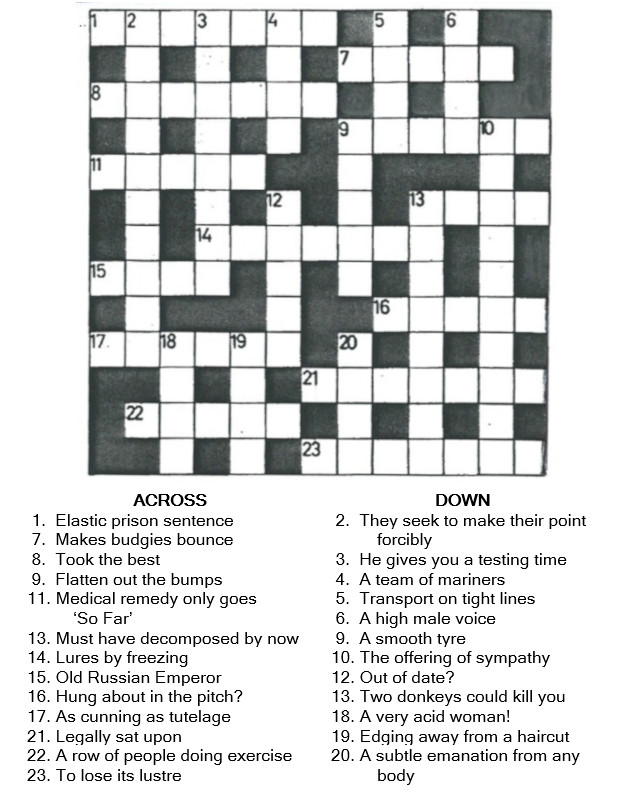 Solution in Article 36.
Solution in Article 36.
8
DOG WALKING ON A SUNNY AUTUMN DAY
Near Sand Point, North Somerset

Steve, Dean, Chum and Teddy
9

BERRYNARBOR PRE-SCHOOL
We
welcome back all our families to Pre-school and hope they all had an enjoyable
summer break and return fit and well for a busy autumn term.
Pre-school would like to welcome Geoff
Barrett as our new Chairperson, Jenny Beer as our Treasurer and a new member of
staff Claire Haynes. Emma Lerwill has
left the Pre-school after serving 7
years as Leader when she cared for in excess of over 100 children and we should
like everyone to join us in sending her a fond farewell. I have temporally
stepped in as Leader until a new lead has been appointed.
We have extended our opening hours to
support working parents and their families and our new opening times are from 8.00
a.m.to 5.30 p.m., Monday to Friday.
|
Breakfast
Club
|
8.00
a.m. - 9.00 a.m.
|
|
Pre-school
Sessions
|
9.00
a.m. - 12.00 noon
|
Morning
|
|
12.00
noon - 3.00 p.m. or 3.30 p.m.
|
Afternoon
|
|
9.00
a.m. - 3.00 p.m. or 3.30 p.m.
|
All
Day
|
|
After-school
Club
|
3.30
p.m. - 5.30 p.m.
|
We are
Ofsted Registered and in receipt of the 2gether Scheme and Early Years
Entitlement.
To find
out more and session availability please phone 07807093644 or e-mail
preschoolberrynarbor@gmail.com
Topics
of learning
This term the children will be
learning all about themselves, building new friendships and some having their first
taste of education.
Outside we shall be looking at the
changes in our season; harvesting our runner beans, looking at the leaves
changing colour and hoping to go on nature walks to explore our environment and
our village.
Later we shall celebrate harvest time
and learning the importance of bees in our gardens. We also intend to explore our senses; our
sense of smell, taste, sight and touch.
In October we shall be holding our AGM. Anyone wishing to meet new people, share
their experiences and knowledge or even learn a new skill is more than welcome
to join us in supporting our local Pre-school. [Date to be confirmed.]
Finally I should like to thank the
Berrynarbor Parish Council for their kind donation enabling us to purchase a
new shed for our outside resources.
Susanna
Hands
10
A BIG THANK YOU!
Thank you to everyone who
sponsored Mum and me for our 10k London Run for Prostate Cancer Research. We raised an amazing £1,000! Thank you all so very much!
Tracy
Congratulations
to you both - what an achievement!
11
.
. . and ANOTHER THANK YOU
I should like to thank everyone who was
involved with the planning of the event to commemorate the 70th Anniversary of
the end of WWII. You (we) were a great
team!
Thank you also to the helpers who turned
up on the Friday to set up and those who helped set up and clear up on the
Saturday too. It really is lovely living in such an amazing village with such
fantastic community spirit.
I
hope that everyone who came to the lunch and/or the evening dance had a great
time - I know I did.
So, who is going to organise a street
party for next year? It will be the
Queen's 90th birthday.
Karen
12
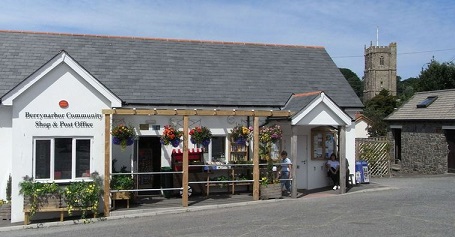
NEWS FROM OUR COMMUNITY SHOP & POST
OFFICE
Local
Produce
We, at the Community Shop are very proud to say that
we support local suppliers and producers of food. This is
important for the local community as research on spending
by local authorities shows that for every £1 spent with a small or
medium-sized business, which our suppliers are, 63p stays in the local economy, compared to 40p with a larger business.
When you buy food sourced from local
butchers, bakers and green grocers, it is likely that a decent percentage of
the produce has had a short field-to-fork journey Along with supporting local farmers, it
means the food is likely to contain more nutrients and have less packaging.
Some of the advantages of local and
seasonal food are that it is:
- Fresher
- Tastier
- Healthier
- Good for reducing food miles
- A way to support local
farmers and keep growing skills alive
- Helpful
in supporting the local economy. The money that is spent with local
farmers and growers all stays close to home and is reinvested with
businesses and services in your community
- Local foods promote a safer food supply. The
more steps there are between you and your food's source the more chances
there are for contamination. Food grown in distant locations has the
potential for food safety issues at harvesting, washing, shipping and
distribution.
- Local growers can tell you how the food was
grown. You
can ask what practices they use to raise and harvest the crops. When you
know where your food comes from and who grew it, you know a lot more about
that food.
- When
you support local businesses, your buying power also helps support local
farmers and your local community. Buying locally produced foods can help
reduce transportation, which decreases the CO2 emissions. It also helps to
reduce the amount of packaging needed.
Added to this you have the advantages of
the delights of your Community Shop where you will always find a friendly face
and a warm welcome, walk off those extra pounds coming to us and be a part of
the community of Berrynarbor.
We are always ready to welcome new
volunteers. If you would like to
become
a member of our happy band and have time to spare, no matter how little, please
pop in and see us.
13
FLU & YOU!
If you are in one of the at risk groups listed below you will have received a letter during September 2015 inviting you to make an appointment for a flu vaccination.
The At Risk groups are:
- Patients aged 65 or over or
Patients who are under 65 with any of the following problems:
- Asthma or another chronic chest complaint.
- Heart problems
- Diabetes
- Kidney disease
- Liver Disease
- Neurological Disease
- A pregnant woman
- A carer
- If you suffer from a serious illness and have a reduced ability to fight infection
For patients who are at risk the best action is to have a flu vaccination every year.
On receipt of your letter simply telephone your surgery, after
11.00 a.m. [to avoid the busiest times] and ask our team for an appointment at one of our special flu clinics that are being held throughout October and November.
In addition our Saturday morning flu clinics have been very popular and this year both Warwick and Waterside Practices will be holding flu clinics on Saturday 3 October 2015 and Saturday 17 October 2015.
Please note that these Saturday morning clinics are strictly for adult flu vaccinations only and are designated vaccination clinics with reception and nursing teams unable to deal with any other enquires such as prescriptions or appointments on the day.
Each practice will also be holding clinics especially for children, with letters going out for these clinics during October 2015.
If you are unable to leave your home for medical reasons we can arrange for a District Nurse to administer your flu vaccination at home.
Please ring the surgery numbers below to arrange your appointment.
Warwick Practice
Ifracombe patients: 01271 863119
Woolacombe patients:
01271 870276
Waterside Practice
Ilfracombe patients: 01271 863840
Combe Martin patients: 01271 882406
14
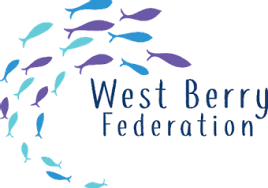
BERRYNARBOR SCHOOL NEWS
Well, what a busy start to the new
school year it has been. During the summer
break steel supports and dividing walls were put in to form a new office,
corridor and learning area on the ground floor. We are looking forward to the development of
a mezzanine floor above, creating space for a staff room and an
additional office space. Many
thanks to Lee and his team who worked long hours through the Bank Holiday
weekend to ensure the building was ready for the start of the term. Then, on the Wednesday, it was all hands on
deck as Staff and Governors cleaned, moved furniture and unpacked boxes ready
for school to start the following day. It has been exciting seeing this next stage
in the improvement of our learning environment unfold and we look forward to its
completion.
So, what else has been happening?
Twelve Reception children have been
welcomed into Strawberry Class under the care of Mrs Wellings and her team. There have also been some additions to the
other classes as a family of three have moved into the area. We hope they will all soon feel part of our
school family.
The lovely weather during the second
week of September fell at just the right time for our junior aged children's
Wild Night Out. The children spent a day
enjoying a variety of outdoor activities and then spent the night under canvas.
Blueberry camped at Watermouth Valley
and Elderberry was at Stowford. It
was a great way for staff and children to get to know each other at the
beginning of the school year.
The children have been harvesting
vegetables that they have grown in the school garden and one day enjoyed a
delicious potato salad made from freshly dug potatoes.
After school sports clubs have resumed
with ball sports and dancing being enjoyed by several children. All in all a happy start to the new school
year.
Sue Carey - Head Teacher
15
IRRELEVANT WORDS
Eyebrows
have been raised by the recent decision to withdraw a number of words from the
new edition of the Junior Oxford Dictionary.
These
include: ACORN, BLUEBELL, HEATHER, MOSS,
BUTTERCUP AND WASP. The
words have been removed to make room for CELEBRITY, BLOG, BROADBAND. Other
words, not connected with natural history, which have been taken out are WINDOW
SILL and JAM JAR.
Presumably
today's media and technology savvy children will never slip on a mossy stone,
be pursued by a wasp or place a jam jar of flowers on a window sill.
Susie
16
 Artwork: Harry Weedon BERRY IN BLOOM & BEST KEPT VILLAGE
Autumn is here and for Berry in Bloom
that means all change to the
tubs and planters. So it is out with the summer planting that is looking
very tired and in with the tulip, hyacinth and dwarf daffodil bulbs to give us
all a good show of colour in the spring.
This last summer hasn't been very good
but the joy of gardening is that you always have next year to which you can
look forward.
September was the Sterridge Valley open
garden trail. After all the bad weather through August, on
the day it was the PERFECT autumn day and the gardens were looking
beautiful. A yummy cream tea was served at the Manor
Hall by Judie and helpers and we managed to make just under £300.00, so a big
thank you to all involved. We do rely on these fund raising events to
pay for the bulbs, flowers and hanging baskets so we are grateful for the
support from the village and holiday makers.
We await the results of the Britain in
Bloom competition on 24th
September at the presentation in Dartmouth.
Wendy Applegate
17
 Artwork: Angela Bartlett
Mincemeat
and Marzipan Tray Bake
At the village celebration on the 5th
September for the end of World War II, Barbara brought a very tasty [if you
like marzipan] cake. I love marzipan
and asked her for the recipe.
Ingredients
to make 15 squares
- 115g/4 1/2oz softened butter plus extra for greasing
- 225g/8oz self-raising flour
- 400g/14oz jar fruit mincemeat
- 115g/4oz mixed dried fruit
- 115g/4oz muscovado sugar
- Finely grated zest of half a lemon
- 1 teaspoon mixed spice
Topping
and icing
- 250g/9oz
marzipan
- 115g/4oz
icing sugar
- 1
tablespoons lemon juice
Pre heat the oven to 160 Deg C/325 Deg F/Gas3. Grease and line a 28 x 18cm/11 x 7inch shallow
tin lined with baking parchment. Put
all the cake ingredients in a mixing bowl and beat for about 3 minutes, or
until smooth. Spoon in to the prepared
tin and smooth the top level. Bake for
50 minutes or until golden.
To make the topping, grate the marzipan
using a coarse grater.
When the cake is baked sprinkle the
marzipan over the HOT cake, and then return to the oven and bake for a further
10 minutes.
Cool in the tin for 5 minutes then
transfer to a wire rack to get completely cold.
Remove the paper.
To make the icing, mix the icing sugar
with the lemon juice and drizzle over the cake.
Cauliflower
salad
My secret is out! Many people have asked me for the recipe for
my curried cauliflower salad and I have only let a few know the secret; BUT as our shop is now stocking the magic
ingredient here it is, and it is so easy.
This is also how I make
Coronation Chicken - substituting cold
roast chicken for the cauliflower.
Ingredients
- 1
cauliflower
- 1 bunch spring
onions
- 1 small
bunch fresh coriander
- Bought or homemade mayonnaise [I use Hellmann's]
- Patak's
Aubergine Pickle [used to be known as Brinjal
pickle] now stocked in our shop
Chop the white part of the cauliflower
in to small pieces - in this recipe the cauliflower is raw. Chop
the spring onions into small slices; you can use some of the green part as
well. Trim the ends of the stalks of coriander then
chop the bunch stalks and all.
Put in to a large bowl and mix with as
much mayonnaise as is needed plus as much of the pickle as you like. This is entirely up to you; I use roughly 2 parts mayonnaise to 1 part
aubergine pickle, but taste as you make it as the pickle is fairly spicy.
I do hope you enjoy the salad it is
great with cold meat.
Wendy Applegate
18
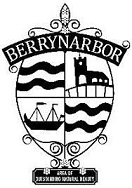
FROM THE PARISH COUNCIL . . .
Items brought forward from the
Parish Council:
-
Parishioners are invited to make suggestions as to how to improve the
facilities at the public toilets in Castle Hill.
-
There is to be a Consultation on the Dog Area and Parish Field.
-
Representations by members of the public at Parish Council Meetings:
To facilitate future Meetings and to
ensure that the 3 minute speaking time by members of the public under the Public
Participation slot is respected, the Public Participation Slot will be the
first item on the Agenda.
If representations are in connection with
a Planning Application, it will be the Chairman's discretion as to whether the
representations are heard during Public Participation or, as is the practice in
some other Councils, heard immediately before that
particular Planning Application is considered.
If members of the public have written
representations, it is respectfully suggested that these are sent to the Clerk ahead
of the meeting so that they can be e-mailed to Councillors to give sufficient
time to read digest it
ahead of the meeting. You will
appreciate that representations on 2 or 3 A4 pieces of paper take time to read. Councillors cannot be expected to
digest all that is said during the time it is being read out.
This will be to the advantage of Councillors and those making representations.
When Planning Applications are received in
a timely way from North Devon Council, the Clerk will send them to a
Councillor for studying ahead of the meeting and they will be circulated to
Councillors as far as possible so
that as many as possible will have seen the details beforehand, as well as
viewing the Applications on the North Devon Council
website.
Councillors volunteer themselves for the
good of the community and the meetings need to be shorter:
Granted there was a Public Rights of Way
presentation and an additional presentation from the Manor Hall Chairman at the August Meeting which
would not normally be the case, but after over 4 hours of sitting around
the table when members of the public have left some time before with still a
lot on the agenda to
discuss, and most Councillors having to be at work the next day, to be able to
give of their best for the Parish, meetings should be a
maximum of 2 1/2 hours.
Your Parish
Councillors are passionate about the village as are many other parishioners and are committed to always assessing each initiative or issue
in the interests of ALL in our community as a whole.
However heated a debate may become, a level
head and respect for others is expected.
-
The Parish Council is working with the Primary School to encourage people
to go to a lunch club and after school clubs.
- If you would like to receive the Agenda and draft Minutes when they are sent
out, please let the Clerk, Sue Squire [sue@suesquire.com] know and she will add you to the circulation
list. If you don't have e-mail and would
like a copy of the Minutes, please ask Sue on [01598] 710526, and this can be
arranged.
Sue
Squire - Parish Clerk
Berrynarbor Parish Council
Adam Stanbury [Chairman] 882252
Sian Barten [862222]
Jenny Beer [jen.beer@btinternet.com]
Julia Fairchild [882783]
Steve Hill [882647]
David Kennedy [07791 781283]
Denny Reynolds [882724]
Linda Thomas [883345]
Clare White [882959]
Sue Squire - Parish Clerk - [01598 710526] sue@suesquire.com
County Councillor - Andrea Davis [883865]
District Councillors - Yvette Gubb [882364], John Lovering [john.lovering@northdevon.gov.uk]
Snow Warden - Clive Richards [883406]
19
MEMORIES OF BERRYNARBOR
It was a pleasure to hear from Geoff Dorking from Plymouth, who had discovered the Newsletter's website on the internet. He was about 5 [he is now 83] in 1937 when his family moved to Berrynarbor from London.
He says:
I was enthralled to see the picture from VJ day and recognised quite a few of the people in the photograph, in particular, Shelia Draper, who with Pam Brookman [later Freestone] and my sister Eileen [later Parkhouse] were great friends. I used to sit behind Shelia in Berrynarbor School. [I even remember her birthday, January 11th] and pull her very long
pig tails with the result that when I had a daughter of my own, who had pigtails, I would curl them round her head like a German girl and call her my frauline. Actually, she married a German!
My mother started a concert party, called The Nomads and we would put on shows in the Manor Hall, raising money for Spitfire Week, Warship Week, etc., and go round to villages putting on shows. The girls wore scanty costumes that raised a few eye brows! Rev. Mylchreest asked my mother for permission for me to leave the Chapel and join the Church Choir.
We first lived at 16 Hagginton Hill. Our neighbours were the Leworthy's - Eric, the elder son, and Colin, who was my chum. We then moved up to Rockville [now Buddicombe], then down to Cross Park, to a bungalow built by a man named Draper, that we called Jomill. I recall the two school teachers were Miss Veal and Miss Richards. Les Thomas was instrumental in helping me get a job as an apprentice butcher at the London Central Meat Company, Ilfracombe, after working for
Reg Thomas in Combe Martin. I don't know if people are aware of the important part Watermouth played in the Normandy landings. The idea of PLUTO [pipe line under the ocean] was tested there to Swansea, 45 miles away. It was a success, and was used to supply fuel to Normandy. The pumping station was on the left hand side of the road, as you approach Watermouth Caves, after the Sawmill Inn.
I left Berrynarbor to join the Navy in 1949 until 1959. About 10 years ago, I drove up from Plymouth to video my old haunts. Stopping to film the house I knew as Jomill a man enquired what I was doing. When I told him I used to live there, he replied, "You must be Geoffrey." I confirmed I was and he remarked, "The last I heard of you, you were in the Antarctic!" I was in 1952/3 and was amazed anyone knew. But that's Berrynarbor! Wonderful!
Sorry to go on for so long. old men talk too much! Thank you again for such wonderful memories. My mother used to say, "God gave us memories, so we may have roses in December". Berrynarbor is one of my December roses.
Geoff Dorking - Plymouth
20
PLUTO
In 1942 a long term trial of PLUTO [Pipeline
Under the Ocean] took place, with a prototype pipeline stretching from Swansea
oil refinery via the Bristol Channel to Watermouth Bay near Ilfracombe in North
Devon. This 27 mile long stretch of 2-inch cable delivered 125 tons a day or
38,000 gallons a day for three weeks. The
pipeline was laid by HMS Holdfast, a converted cable laying ship and a self-propelled
Thames barge Oceanic.
PLUTO was a new type of pipeline that
was laid across the English Channel after the Allies had landed in Normandy. It enabled fuel to be pumped across the
Channel for use by the thousands of vehicles used by the Allied troops in
France. Fuel could be pumped directly
from the UK network of pipelines, and was connected to new pipelines laid overland
on the continent, following the advance of the Allied armies.
PLUTO was not the only means of
supplying fuel to the Allied armies in France. In fact the pumping of fuel
using PLUTO only began on 18th
September 1944, which was more than three months after D-Day, and beyond the
end of the Battle of Normandy. These
first pipelines were laid between the Isle of Wight and Cherbourg. A second set of pipelines was laid between
Dungeness and Boulogne.
Two articles, from Tony Beauclerk and
Don Taylor, appeared in the April 1998 issue of the Newsletter.
21
FLAGS
OF THE WORLD - SOME BUT NOT ALL!
As you may recall, many large flags were
purchased for last year's Commemoration of WW1 which added wonderful colour to
that event in the Manor Hall. Recently,
many of these flags were used once again in celebration of the end of WW2, also
held in the Manor Hall.
These flags are held in safe keeping in
our house, and it has occurred to us that if there is another celebratory event
held specifically for the benefit of Berrynarbor, either in the Manor Hall or
in a private residence, then please do not hesitate to contact Sue or me on [
01271] 883893 and we should be happy to lend the flags.
We are, of course, mindful and grateful
to Berrynarbor Parish Council who kindly donated funds last year to the WW1
committee so that we were able to purchase all the large flags.
Stuart
and Sue Neale
22
QUICK QUOTE
"Any time spent with a cat is not time wasted."
Sigmund Freud
23
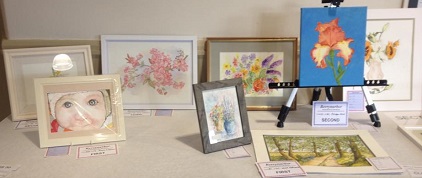
BERRYNARBOR
HORTICULTURAL & CRAFT SHOW 2015
Sadly, the Entries for this year's show were fifty per cent down on last year.
With the fundraising necessary for the show, we need to consider whether it is worth carrying on as a yearly event, change to a 2-yearly event or should it fold?
The answer lies in the hands of the villagers!
Would you like to join the
Committee? If you would like to bring
new and fresh ideas to the event, please contact Karen in the Shop.
The Committee would like to thank all
those who made an effort and supported us. On the afternoon there was an excellent
turnout which was great, and we raised just under £330.00 before costs, so a
big thank you.to everyone who came along.
The results for this year were:
- The Globe Cup [Floral Art] - Pip Summers Junior: Shannon Hill
- The Walls Cup [Home Cooking] - Sue Owen Junior: Shannon Hill
- The Davis Cup [Handicrafts, Needlework] - Judie Weedon Junior: Daniella Hill
- The Watermouth Cup [Handicrafts] - Sylvia and Dave Mason Junior: Lucy Stanbury
- Grow Your Own -
- Potatoes: Tony Summers No Junior entries
- Sunflowers: Sue Owen Junior: Shannon Hill
- The George Hippisley Cup [Art] -Linda Camplin Junior: Caitlin Burgess
- The Vi Kingdon Award [Photography] -Judie Weedon Junior: Shannon Hill
- The Derrick Kingdon Cup [Fruit and Vegetables] -Pat Weston Junior: Salah Gingell
- The Lethaby Cup [Potted Plants] -Tom Bartlett Junior: Caitlin Burgess
- The Manor Stores Rose Bowl [Cut Flowers] -Tom Bartlett Junior: Caitlin Burgess
- Home Made Drinks -Colin Applegate Junior: Shannon Hill
- The Manor Hall Cup - Best Horticultural Exhibit: Tom Bartlett
- The Ray Ludlow Award -Best Non-Horticultural Exhibit: Judie Weedon
- The Junior Cup [Cumulative Total] -
- 1st Caitlin Burgess 70pts
- 2nd Shannon Hill 63pts
- 3rd Salah Gingell 20pts
- The Sally Barten Bowl [Junior Handicrafts, Needlework]: Daniella Hill
- The Watermouth Castle Cup Best Exhibit on Show theme of Cities - Towns and Villages: Judie Weedon
The organising group would like to
congratulate all the winners and thank everyone who took part or helped run the
event in any way.
First, on behalf of everyone who entered
the show and those who came along in the afternoon to see the exhibits, a big
thank you to the organising group. As a
member of a past organising group, I know how much hard work goes into running
this event - and it is a lot! How
disappointing to have only half the previous entries. As a winner, it is always nice to have your
work rewarded, but with so few entries that achievement is rather hollow.
Where were you all? Hopefully, this was just a one-off and
you'll be back!
The Horticultural and Craft Show was
pioneered by Jenny Taylor and Derrick Kingdon and the first Show, under the
auspices of the Manor Hall Management Committee, was held in September 1978.
Since then it has run every year except
for 1984 when due to the lack of an organiser the event didn't get off the
ground, and 1997 when due to the untimely death of Princess Diana, the Show was
cancelled at the very last minute as her funeral took place on the day in
question.
Following on from Jenny and Derrick and
their group and from 1986 to 1994 the event was chaired by Joy Morrow. In 1995, Dave Beagley and the Committee
organised an event which in spite of high temperatures and drought, was a great
success.
From 1996 to 2003, Linda Brown Chaired
the organising Committee, running seven excellent shows in the face of falling
entries.
2004 saw a new independent organising
group taking over, with record entrants and entries in its first year - 93
entrants and over 600 entries. In excess
of 250 people viewed the display and the sum of £325 was raised for future
events. A new category for juniors was
established and monetary prizes awarded.
This group ran the Show successfully until 2010 in spite of the strange
weather in 2007 and 2008,
Since then, successful shows have been
run by the organising group, the make-up of which has changed several times.
Can we let this first class event, with
its diverse classes - of which everyone must surely be able to enter at least
one - no longer be one of the village's annual events? I sincerely hope not.
Judie
24

Ruby Barrow [Reception]

May Townsend [Year 2]

Aston Baillie [Year 1]

Arthur Lane Cooper [Year 3]

Sam Pawsey [Year 4]

Louis Beer [Year 5]
25
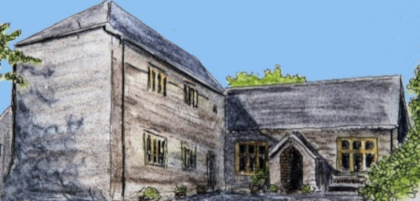 Artwork: Paul Swailes
THE MANOR HALL TRUST
There are quite a few things to report
regarding the hall, ranging from August to Christmas!
Berry
Revels - We
were lucky with the weather in early August, so thanks to all the helpers and
volunteers who helped us raise £1370 net of all expenses, and thanks also to
all those who came along. It's good
that people get together at events like this, and of course it all helps our
fundraising.
Christmas
Card Exchange - We
have decided NOT to run the Christmas card exchange this year, so some
people may wish to place Christmas messages in the newsletter instead, or make
other arrangements. We do intend,
however, to have a short get-together to say thanks to all the people who have
helped out with Hall affairs over the last year, whether by delivering
newsletters, helping with the Revels, joining our working parties, and so on. We'll give details of this in early December
and the December Newsletter.
Health
and Safety at the Hall - The
Management Committee has reviewed the health and safety arrangements at the
hall and has agreed a new policy, together with carrying out a wide range of
repairs and other actions. Part of our
new procedure involves an updated booking form which sets out the
responsibilities of those who hire the hall, together with a new hall user
handbook. Both of these documents will
be sent to anyone hiring the hall from now on, usually by email. Regular users of the hall have also been
sent copies by email during September, and their continued use of the hall
means that they are also deemed to have accepted the updated conditions of
hire.
Hall
Renovation - What Next? - We
are often asked what is happening next! Our plans for the hall continue to move
forward. The newsletter delivered to all
households in the village in August contained a near-final floorplan for the
main hall and invited comments and queries at the drop-in session held on 1st
September. This followed the in-principle agreement of
the Parish Council in August to facilitate our planned extension to the east
elevation of the hall into the play area. At most this will mean moving the existing
fence line some two meters or so, and moving the swings slightly further into
the play area.
Whatever
the outcome of our grant applications, we shall have to install a new heating
system for the main hall. Therefore we
are also commissioning an energy assessment of the hall to determine the energy
output needed to heat the hall
as it is now and as it might be after renovation, and to give options for new
heating installations.
All
this means that we shall be able to finalise detailed drawings and apply for
planning and listed buildings consents this autumn. In parallel with this we shall obtain full
QS costings for the works. As and when
the consents are secured we shall finally be able to submit our Big Lottery
application, with a fully designed and costed project and all statutory
consents in place.
In
addition there is work to be done to develop separate work specifications and
costs for the Manor House wing, as the Big Lottery does not fund heritage
projects. We shall, therefore, be
applying for separate funding for the work needed to the medieval roof and the
Tudor facade of the old wing.
This
is a very short summary of what is a quite complex project!
Grants
and Donations - At
its August meeting, the Parish Council also agreed to make a grant to the Manor
Hall of £4500, matching funds made available by the North Devon Council. The Men's Institute has also made a donation
to our funds of £500, which is very generous indeed. We thank both organisations for their
support - it is very important to be able to demonstrate community support for
our plans when seeking grant funding, so these contributions are really
helpful.
Manor
Hall Management Committee
26
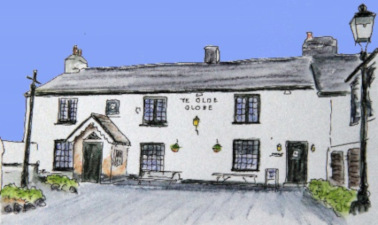 Artwork: Paul Swailes NEWS FROM THE GLOBE
Friday, 2nd October - Games Night. You will be split into 6 teams on the night to compete killer style at pool, skittles and darts. Everyone welcome. You do not have to be part of a team as we shall put you with a team on the night. This is a great social event and a lovely way to meet new people, especially if you are fairly new to the village.
Saturday 7th November - Murder Mystery Night
I need to allocate characters to those who are coming and we need between 20 and 30 to make this work. So if you are interested, please let me know soon. Karen on [01271] 882465.
All You Can Eat Nights
- Saturday, 24th October: TexMex
- Saturday, 28th November: Indian
Advance notice for those who like to plan ahead! This year's theme for the New Year's Eve Party at The Globe is Kings and Queens.
27
CHRISTMAS
GREETINGS THROUGH THE NEWSLETTER
You
will have read in the report from the Manor Hall that they will not be
providing the Christmas Card delivery this year. Although it is rather early to be thinking
about Christmas, the shops are already full of cards and other Christmas things
and it will be here again before too long!
Many
readers have been sending their greetings to friends and neighbours through the
Newsletter for some years, and will be able to do so again this year. This has become a popular and traditional
way to send Christmas greetings.
So,
to everyone, especially newcomers and those who have perhaps sent cards via the
village delivery, if you would like to do this, it is very simple. Just decide on your message and leave it
with a donation either at Chicane or the Shop by Wednesday, 11th November
at the latest. Messages will appear in
the December issue of the Newsletter.
After covering the cost of printing,
donations will be shared between the Newsletter and the much needed funds for
the Manor Hall - your donations have always been very generous, so please carry
on that way!
Judie
28
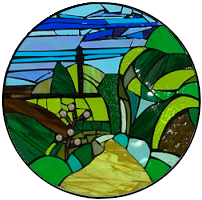 Artwork: Helen Weedon
RURAL REFLECTIONS - 70
As summer progressed, so the presence of
one wild flower
was always evident along the path I had discovered the previous winter; a path
following the course of two separate streams that ran within a deep natural cutting, hidden by
overhanging trees. Enchanter's
nightshade thrived in this shady region and yet, growing to fifty centimetres at
its tallest, needed to be viewed en-masse in order to
be appreciated. Such was the case where
the Lower Stream disappeared into a buried pipeline at the Hushed Hillside,
each plant showing off its numerous leafless
spikes that elongate to where the tiny white flowers open and twinkle.
Another wild flower to prosper in these
favoured conditions was hedge woundwort. It too found its own spot to flourish
at the foot of the short steep track up to the Old Farm gate. On a dull day its deep reddish purple flowers
can appear luminous, packed as they are in whorls that form a dense, pyramidal
spike. Its unpleasant smell, especially
when bruised, can, however, be a turn off to the admirer; as it must have also
been for ancient folk who had the plant used on them to staunch bleeding or
heal their wounds.

Bramble
blossom on the other hand is happy in both sun and shade. It could be spotted
immediately after descending Jacob's Foot, the small flight of wooden steps at
the eastern end of the pathway. There
are over four hundred species of bramble in Britain, the blossom always five
petals but the
colour ranging from white through to purplish pink. My
favourite country name for bramble is brummeltykites. Folklore says that brambles should not be
picked beyond Michaelmas 'else the devil will defile them'; a saying based, one
assumes, on the likelihood that any blackberry picked after this date will have
probably gone over. Its leaves were
once used as a remedy for burns whilst its branches were placed around graves
to keep bad spirits away. Attempts to cure diseases were also undertaken
by walking people beneath an archway of brambles.
At Tumble Bridge where the calming sound
of a gentle waterfall could be heard, one would often admire sporadic wood avens
- or as the plant is also known, herb bennett. With their five yellow petals spreading to
form a cup shape, the flowers were once hung in country homes to keep the devil
away. Its fruits meanwhile have hooked
prickles that enable them to catch onto fur and clothing.
Ahead of Borderbay
Bridge where the Top Stream runs beneath a simple wooden structure and heads
away from the path to border two farms before meandering towards a little bay,
meadowsweet could be found making the most of the damp streamside conditions. Creamy white and thickly clustered, its
flowers were held sacred by druids and were used by witches to enable them to
leave their bodies. On a more down to
earth basis, literally, the plant was also once used on floors to sweeten the air. Elizabeth I was particularly fond of the
plant and would request it be strewn across the floor of any home she was
visiting.
The high banks recede either side of the
bridge, dispersing the trees and inviting three different wild flowers to make
the most of the daylight on offer. On
the nearside the commonest of the willow herbs, the broad-leaved, displayed
their small deep pink flowers made up of four notched petals. An irritating weed to
many gardeners, the plant's relentless invasion is thanks to its hairy seeds
that easily disperse in the wind.
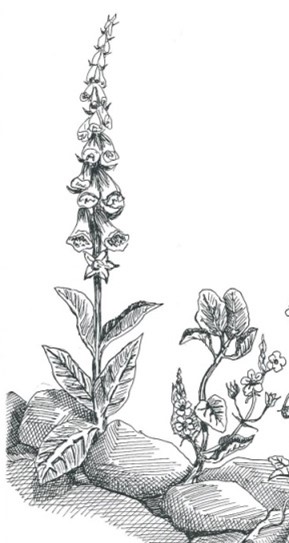
Meanwhile an outstanding lone marsh
thistle stood beside the bridge with its headed cluster of deep purple flowers
bursting from the tip of a stem some four feet tall. A great attraction for bumble bees, its
traditional appeal for
human consumption was to eat the young stems raw as part of a salad. On the
far side of the bank a large clump of hemlock stretched out - so thick, the
density of the flat white topped flower heads pulled the rest of the plant into
the river and diverted the course of its water.
Conspicuous by its purple spotted
stems and its unpleasant smell, the plant is poisonous; Socrates is reputed to
have drunk a fatal infusion as a means of his execution. Its country name, devil's blossom, is self-explanatory.
Just where the banks rose again to
create a new archway of branches, a wild flower that enjoys woodland margins
was in good number. With their off
white umbrels, sometimes with a hint of pink, hogweed is also a plant to avoid as it can
give out a substance that causes the skin to become sore or blister in sunny
weather; unless of course you particularly want to pick the young leaves which
apparently taste like asparagus when cooked!
It was once an economical source
of food for the household pig, hence its name.
At The Glue, a boggy area that gave a
hint to the embryo of the Lower Stream, some escapee meadow buttercups could be
seen along the ridge of the banks. With
their five shiny yellow petals, the plant always reminds me of how children
once held them beneath each other's chins to see if they liked butter. The plant was also once held around the neck
as a supposed cure for lunacy whilst the roots, ground up with salt, were said to
the help cure the plague.
At Hangman Peek, where a trough in the
bank acts as a perfect frame for Little Hangman, daylight from a further break
in the overhanging canopy had encouraged a resplendent display of red campion. Its Latin name is silena dioice; silenus being possibly from its red complexion [it
has five deeply notched petals] and its jolly appearance in winter; dioca from
its meaning of 'two houses', based on each plant having only one sex and so
needing two plants to produce seeds. It is also known as bachelor's buttons - in
the sixteenth century women wore the flowers beneath their aprons to entice
men.
Both red campion and enchanter's
nightshade were in evidence at the Hidden Falls, but it was a profusion of herb
Robert that always caught the eye here. Boasting their small dish shaped flowers, each
one's orange stamen blended with the five deep pink petals. However, in western Britain the flowers can
sometimes be white. Here is also a
smaller flowered sub-species known as little robin, a rarity only to be found in western as well as southern
Britain.
Finally at Lower Ash, where an ash
tree's branch had partly split and now lay horizontally across both banks, a
trio of one of my favourite wild flower species leant out to greet me -
foxgloves. All three displayed a
plethora of deep pink bell shaped flowers, densely packed on their tall spikes.
The origin of its name is believed to be a corruption of the word 'folks
and 'gliew', the latter an Anglo Saxon word for an
instrument with many bells. Fairy bells is a country name for the plant as it
is believed that the flowers ring out to summon the fairies; unfortunately if a human hears the ringing,
they are supposedly destined to die! On a more realistic note [unless of course you
believe in fairies] William Withering is famed for making a great medical
breakthrough in the treatment of heart failure by extracting digitalis from the
plant and testing it on turkeys. The
plant's Latin name is diigtalis purpurea. It is of course now used widespread and is a
great benefit to millions of people worldwide.
Illustrations by: Paul Swailes
Steve McCarthy
29
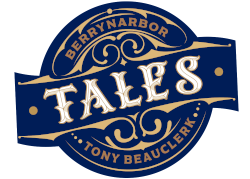 Artwork: Angela Bartlett
FROM TONY B
Dear All
There was a young lady from Ryde
Who at green apples and died.
The apples fermented inside the lamented
And made cider inside her inside!
[
At my age of 86 I feel that I should try
to keep an eye on my health. Although
I once had a table tennis table I could
not get anyone interested enough to play
and for that reason I made a practice table and installed it in the back of my
garage. I have a timer and put this on
ten minutes. I have two or three sessions a day
to try to keep the flab at bay. Then,
my next door neighbour gave me a dart board.
This I also installed in the garage.
So, now I have two games.
Watching The Cube on television I saw another game
which I copied. This was to roll a ball
to a certain area where it must stop. I
achieved this with an old length of gutter with a stop at one end. The area in which the
ball should stop was marked with red tape about 14 inches, an inch or two away
from the far end. So, this was now game
number 3.
The
fourth game again came from The Cube and was quite simple. All you needed was six tennis balls and a
bucket. I stand the bucket about eight
feet away and throw the balls to bounce once before it goes into the
bucket. All good fun and bending down
to pick up the balls is good for the waistline!
Out in
my garage I try to keep fit.
I'm
retired now, so it helps me a bit.
I play
table tennis all on my own,
It's
good for my tummy
It gives
it a tone [or should do!].
The
other three games I've described in this letter
So
exercise quick, you'll feel a lot better!

Illustrated by: Paul Swailes
Tony Beauclerk - Stowmarket
30
U-BOATS IN THE TWO WORLD WARS
Correspondence to The Independent
U-boats
in Wales - Recent correspondence about
U-boats making landfall in the British Isles reminded me that they were
renowned for surfacing on dark nights in secluded Cardigan Bay coves in order
to purchase a sheep from a local farmer.
The Kriegsmarine developed a taste for Welsh
lamb during the First World War and are reputed to have maintained the custom
during the Second, or so I was told in my youth. R.
Coles, Hampshire
For
you, Dai, the meat sale is over - Yes, German U-boats used to
surface in Cardigan Bay where they would buy meat, at hush-hush prices from a
local farmer. He was known throughout
Cardiganshire as Dai Swastika and to his Berlin handlers as Jones the Spy. His phone number was given to the Nazis by
Von Ribbentrop who had once worked out of Aberystwith as a wine salesman and
had many friends in the area. That's
why the Luftwaffe never bombed the town, or so I was told in my youth. Dr M. Stephens, Cardiff
U-boats
over Somerset? - Somerset can beat Welsh dealing
with the Kriesmarine. On 16 October
1940, a damaged Dornier bomber lost height, nearly cleared Maesbury hill, but
scraped the earthworks of the ancient hilltop fort and crashed. All four fliers were killed.
This established two
records. The Dornier is still known
locally as 'the only bomber brought down by the Ancient Britons' and because
the Germans were short of navigators, the crew included a naval flier, Lt. Erwin Black, giving him the
dubious distinction of being the only German naval officer killed in
action in Somerset. D. Brown,
Somerset
Those
U-boats - In August 1942, when I was a boy
staying in a village near Aberporth on Cardigan Bay, from time to time a
strange aircraft would fly slowly up and down the coast as if looking for
something [a waiting U-boat?]. The coastal
anti-aircraft guns would fire at it, but never managed to hit it. Dr. Stephens' letter explains why.
J .Evans
Goering
steps in to U-boat tales - I feel that Dr. Stephens is
treating the letters concerning U-boats in Wales with undue scepticism and
hilarity. Not only did the U-boat crews
land to replenish supplies but they also bought Welsh antique furniture from
various coastal locations. This was
shipped back to Germany and was much prized by the Nazi leadership and Goering,
an avid collector of other people's treasures, including Welsh dressers. Alas, all was destroyed in the Berlin bunker
in 1945.
Incidentally, a relative was
told by a farmer of a meeting with a U-boat commander who had an uncanny
resemblance to the actor who played the U-boat captain in a famous episode of
Dad's Army. All this I was told in my
youth. G. Thomas, Shropshire
Perhaps we North Devonians are
more moral than the Welsh, or simply less enterprising. We only supplied U-boats with water during
the Second World War. They would come
ashore in rubber boats, at dead of night, to collect fresh water from the
Sherricombe Falls, Holdstone Down, near Combe Martin. This has been verified by the son of one of
the commanders, making a postwar visit.
The very soft North Devon water is not especially good for drinking but
perfect for getting a good lather from ersatz soap. D. Huxtable, West Sussex.
Welsh dressers? That's nothing. Those U-boat crews also started buying up our
car industry and our public utilities and bidding to build our railway
rolling-stock.
Contributed by David Huxtable
via Lorna and
Michael
31

32
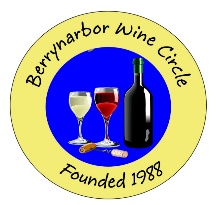
BERRYNARBOR WINE CIRCLE
Berrynarbor Wine Circle summer trips
have been occurring off and on for many years.
Recently, we have had a wine
tasting by Majestic at Arlington Court, visited Eastcott Vineyard, near
Holsworthy, had a wine tasting at Majestic's of Barnstaple and in July this
year, we visited Yearlstone Vineyard, near Bickleigh. They
have been well-supported and enjoyed by all.
Yearlstone
Vineyard was described by one member as the 'prettiest location we've been to'; I'm assuming that's
as a BWC visitor! It has, certainly, a stunning location with
wonderful views of the Exe Valley, but then, ideally, vineyards should be on free-draining
soil and south-facing slopes in order that grapes can ripen well in sunshine, and
they do. Their winery is one of the best
equipped in England; their bottling machine was fast, efficient and fascinating
to watch!
Owners, Roger and Juliet White arrived
at this vineyard in 1994. When they
arrived, some of the vines were more than 30 years old and, therefore, grape
production was poor. They have removed
and replaced vines to ensure that they can produce award-winning wines. Juliet, previously a Kitchen Designer,
undertook a viticultural course at Plumpton College in Sussex: England's only
wine college. They grow a variety of
grapes and produce six types of Cool Climate wines, including a refreshingly
dry rose and Vintage Brut: Yearlstone's fizz.
Yearlstone do group tastings in the
evenings; we followed their very friendly,
informative tour and tastings with an evening meal here too. Unfortunately, it was a cool evening, so we
had to eat inside their cafe; their spacious terrace overlooks their superb
views. I had their Spanish style king prawns
with garlic, wine and sherry, with salad.
They were absolutely delicious - I
could have drunk a bowl of the sauce!
Their desserts change regularly, but I had their lemon and pine nut
torte, which was good. All food is made
by their Chef, Tim Harris, initiator of Crediton's Food Festival.
The vineyard and cafe are open to the
public for tastings and lunches between 11.00 a.m. and 4.00 p.m. on Wednesdays
to and including Sundays, in spring and summer. They are well worth a visit.
Judith
Adam
The
2015/2016 Wine Circle season begins on Wednesday, 21st October. The programme up to Christmas is as follows:
- Wednesday
October 21st: Jack Hicks of Majestic
Wines Barnstaple - The Variety of Italy
- Wednesday
November 18th: Peter Rollinson of Bray
Valley Wines, South Molton
- Wednesday
December 9th: The Wine Circle Christmas
Food & Drink Evening. Maximum of 60 people so tickets and food contributions must be arranged
at the latest by the November meeting.
33
ARTS AND CRAFTS FAIR AT LEE,
SATURDAY 24th OCTOBER TO SATURDAY 31st OCTOBER
Memorial Hall, 1.00 to 7.00 p.m. each day
The perfect place to start your Christmas shopping! Come and visit us in our delightful village and browse a wide selection of beautiful arts and crafts all created by local artists.
An opportunity to purchase unique and unusual items either as a gift or as a treat for yourself!
Free admission and ample parking with disabled access if required next to the Memorial Hall. Everyone welcome. We look forward to seeing you all!
34
MOVERS AND SHAKERS - NO. 59
SIR BEVIS BULMER
[1536-1615]
Elizabethan Engineer and Speculator
In the North Devon Journal's copy of August
20th this year, you may have noticed a small entry with a photograph of three
teenagers and the heading "Chance to explore a silver mine". We took the chance - and maybe you did, too,
in which case you would have had a very agreeable and enlightening experience
of Combe Martin's silver mine that closed commercially in 1880.

The
open day was made available mainly because of the year-long work put into a
Young Roots project by Sam and Hannah Boyce and James Found who created an
exhibition on the history of the mine and produced a film about it, on sale for
£5 that can now be bought from Combe Martin Museum. The project was supported by the Lottery
Fund, North Devon AONB and Exmoor National Park and is now on permanent display
at the site.
From this, one of the things we learnt
was that miners as well as sailors measure depth in fathoms: one fathom is 6 feet - or the length of a
man's outstretched arms. Combe Martin's
St Peter's Church, whose ornate design was paid for by the wealth of the mine,
is about 16 fathoms high. Even the
shortest mineshaft is 20 fathoms - or 8 double decker buses piled high. The deepest shaft is 120 fathoms - 40 flights
of stairs deep! And the tunnels run
under the main street. By this summer,
excavation of existing shafts by volunteers has reached 28 fathoms [10.5
double deckers!].
Following our visit, we watched Penelope
Keith on Channel 4 visiting Combe Martin and the mine as part of her Hidden
Villages series. During the show we saw
a delightful Ellis brooch, dating from 1837 and privately owned. Other pieces not shown are treasures of St
Peter's church.
The exhibition and television programme
made me think of the many people, since the first records in 1292, who have had
dealings with the mine.
One of the earliest, in 1294, was
William Wymondham who in the twenty-second year of the reign of Edward l " accounted
for 270lbs weight of silver forged for Lady Eleanor, daughter of Edward l" and
two years later brought to London 704lbs.
But standing out was Sir Bevis Bulmer. Born in 1536, he was the son of Sir John
Bulmer and his wife Margaret Stafford who was said to be the illegitimate
daughter of Edward Stafford, 3rd Duke of Buckingham. Unfortunately both parents
became involved in a rebellion known as the Pilgrimage of Grace and were
executed the year after their son's birth, their land transferring back to the
Crown.
Bevis's interest in mining started as a
youth when he visited the iron smelter at Rievaulx Abbey and he began his
career at some of the former Bulmer properties at Wilton in North Yorkshire. He then founded lead and calamine mines in the
Mendip Hills in Somerset and in 1581 visited the silver mines and smelters in
County Wexford.
In 1583, Dr John Dee had entered into a
lease to work the silver and lead mines at Combe Martin and Knap Down, but a
year later fled the country because of bad debts. The lease was taken over by his former pupil,
Adrian Gilbert [brother of Humphrey Gilbert the celebrated Elizabethan
navigator] and John Popplar, a London lapidarist. In their first year they made a rich strike
at Fayes Mine in Combe Martin, but had great difficulty in smelting the ore.
The fame of the strike and smelting
problems became well known and Sir Bevis brought 2lbs of ore to his refiner,
Stephen Atkinson, who smelted it successfully.
Bevis then approached the partners for a deal: he would bear the cost of
raising the ore and smelting it for a half share in the profits. With their agreement and under his direction,
the mine reached 32 fathoms and an equal length along the vein. In the first two years, each partner gained
£10,000 [more than £1.5 million today], which went down to £1,000 by 1592 when
the vein was almost exhausted.
A
smelt mill and silver refinery was built in the 1520's by Joachim
Hochstetter [doesn't sound a local chappie!] but had been idle for many years.
This was probably refurbished by Bulmer for his own use. From the last smelt he
had two silver drinking tankards made: one for William Bourchier, Earl of Bath
in 1593 on which was inscribed
In Martin's Combe long lay I hid,
Obscured, deprest, with grosser soyle,
Debased much with mixed load,
Till Bulmer came, whose skill and toyle,
Refined me pure and Cleene,
As richer no where els is seene,
And adding yet a farder grace
By fashion he did inable,
The worthy for to take a place,
To serve at any Prince's table,
Combe Martin gave the use alone,
Bulmer fining and fashion.
His engineering skills had produced a
patent for his lighthouse, followed by a patent for a machine to cut iron for
nail making which brought him approval by the Queen in May 1588. Further expansion of his skills came when the
Corporation of London gave him a lease to build a 'water works' powered by a 'newly
erected engine' for supplying drinking water to Cheapside. To mark his success, the second tankard,
weighing 131ozs was presented to Sir Richard Martin, Lord Mayor of London and
Master of the Mint in 1594. On it was
an engraving of Sir Bevis and another poem about his achievements. Over the years, this has been melted down
into 3 tankards and spouts were added in 1731. These are now at the Mansion House marked
'The gift of Bevis Bulmer'. One tankard
is still used today at the Lord Mayor's banquet.

Bulmer continued his mining activities under
James l. He spent several years in
Lanarkshire mining gold, but as Atkinson, his constant companion throughout his
mining career, wrote, Bulmer 'wasted
much himself' and 'gave liberally to many'
in order to be 'praised and magnified' and always had 'too many irons in
the fire'.
In 1611/12 both men worked in mining at
Kilmore in Tipperary, Ireland, but according to Atkinson, Sir Bevis Bulmer died
in 1613 in Yorkshire 'penniless', owing Atkinson £340 as well as leaving debts
in Ireland.
Nothing is known of his marriage, but he
had a son, John, and three daughters, Elizabeth, Prudence and Elizabeth
[again].
After he left Combe Martin, the mines
fell into disuse and since 1648, repeated attempts to work them have failed. Yet many eminent geologists regard the area
as a highly valuable but neglected district.
To get back to the present day mine,
visits can be arranged by appointment, preferably on Sunday mornings. You will need to e-mail Max Boyce the underground
Mine Captain on cmsmrps@hotmail.co.uk . It is well worth a visit to see and support a
long associated piece of Combe Martin's history.
Grateful thanks for all the help
provided by the Boyce family and Marie Boudier.
PP
of DC
35
CROSSWORD ANSWERS
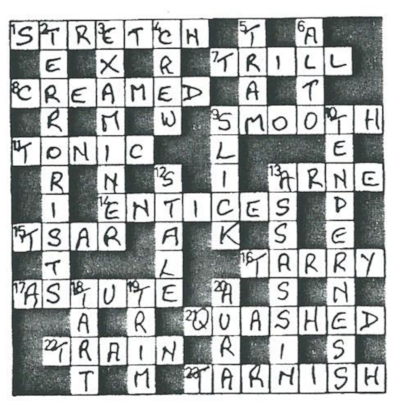
36
WEST COUNTRY WALK - 152
"When I set out for Lyonesse"
Castle Boterel, St. Juliot and 'A Pair of
Blue Eyes'
"... blue as autumn distance - blue as the blue we
see between
the retreating mouldings of hills and
woody slopes
on a sunny September morning. A
misty and
shady blue, that had no beginning or
surface and was
looked into rather than at."
These
lines are from Thomas Hardy's novel 'A Pair of Blue Eyes' which is set in and
around Boscastle and St. Juliot church at Hennett a few miles inland.
In
1870 while working for a firm of Dorset architects, Thomas Hardy had visited
St. Juliot to make preparations for the restoration of the church which had
become very dilapidated. There were
cracks in the 14th century tower; the
carved bench ends had rotted and ivy hung from the roof timbers where birds and
bats had taken up residence. It
was a visit which changed Hardy's life.
As the rector was ill with gout it was his sister-in-law, Emma Gifford,
who greeted Hardy and showed him around the church. Four years later they married and Emma
persuaded him to give up architecture to be a full time author.
From
blustery and busy Boscastle I took the path inland along the River Valency
towards St. Juliot church. It was a very
pleasant walk through little water meadows of yellow hay rattle and southern
march orchids; banks of bugle and ox-eye
daisies, flag irises at the water's edge.
Then on through woodland, a little boggy
underfoot after a morning of heavy rain but now the sun had come out and with
it a great abundance of butterflies;
common blues, wall browns, orange tips and speckled woods.
Illustrations by: Paul Swailes
On Hardy's visits to supervise
the work on the church, he and Emma would often stroll down this path to the
sea, Emma described the route:
"Often
we walked to Boscastle harbour down the beautiful Valency Valley where we had
to jump over a low wall by rough steps . . . to come out on great wide spaces
suddenly ... "
In
'A Pair of Blue Eyes', Boscastle is given the name Castle Boterel much as in
Hardy's Wessex Dorchester becomes Casterbridge and Barnstaple is Downstaple. St.
Juliot is in an attractive, secluded setting.
The church contains a memorial to Emma, which Thomas Hardy designed, on
the wall of the north aisle and in 1928 a tablet was installed recording
Hardy's association with the church and the neighbourhood.
More
recently a three panelled engraved window, commissioned by the Hardy Society,
was placed there. It includes a line
from his poem 'When I set out for Lyonesse'.
Unfortunately,
the ancient chancel screen is not there.
Hardy had left instructions for the screen to be retained and its
damaged tracery to be renovated but was shocked to find that due to the
misplaced generosity of the builder it had been replaced by a new and "highly
varnished travesty". "I'll give 'em a
new screen instead of that patched up old thing", the builder said.
Emma
wrote: "scarcely any author and his wife
could have had a more romantic meeting, with its unusual circumstances in
bringing them together . . . at this very remote spot, with the wild Atlantic
Ocean rolling in with its magnificent waves and spray, its white gulls and
black choughs and puffins, its cliffs and rocks
and gorgeous sunsettings in a track widening from
horizon to the shore."
Sue H
37
THOMAS
HARDY OM
Thomas Hardy was a prolific Victorian
novelist and poet with more than numerous books. poems
and quotes to his credit. Many readers
will have both enjoyed his books or studied them at school. Many more will have seen those turned into
films, including - Tess of the D'Urbervilles, The Return of the Native, The
Claim, Jude, The Mayor of Casterbridge, Under the
Greenwood Tree and Far From the Madding Crowd.
Hardy
was born on the 2nd June 1840 at Higher Bockhampton, Stinsford near Dorchester.
His father was a stone mason and violinist, his mother enjoyed reading
and relating all the folk songs and legends of the area.
In 1874 he married Emma Gifford, who was
born in Plymouth on the 24th November 1840.
Unable to have children, the marriage became increasingly unhappy and
after some 20 years, Hardy began to see other women whilst Emma became a
recluse. although she was an active suffragette and
supported women's suffrage. She died in
1912 at the age of 72 from heart failure and was buried at Stinsord.
In 1914, Hardy married his secretary,
Florence Dugdale, 39 years his junior.
Following his death from pleurisy on the
11th January 1928, his funeral at Westminster Abbey caused controversy. The nation supposedly wanted him buried in
Poets' Corner whilst he himself had made it plain that he wished to be interred
at Stinsford with Emma and his parents. A somewhat grotesque compromise was reached
and his heart was buried at Stinsford whilst his
ashes were interred at Westminster Abbey.
38
BERRYNARBOR CARNIVAL CLUB
Well done to everyone who was involved with
the carnival float this year " 100 Years of
Ladybird Books".
Many thanks to all who painted, stapled,
lifted, downloaded, copied, etc., etc., and
of course, those of you
who took part.
The costumes were
fabulous and we
were pleased to win
1st Best Topical
and 1st Best Overall
at Combe Martin [cups
can be viewed in the Village
Shop]. We also achieved a 3rd in the
Ilfracombe Carnival as well as amassing
3 rosettes for individuals who entered different
classes.
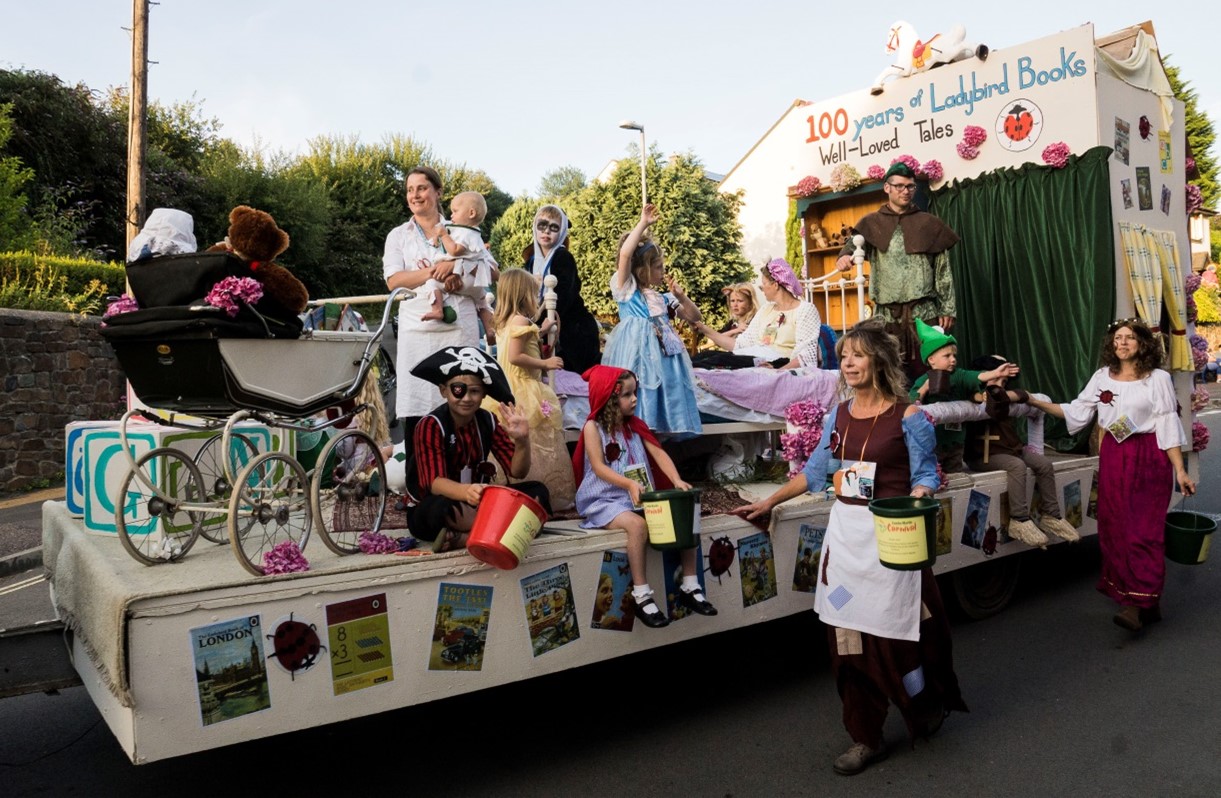
Big thanks to Phil the Music Man,
and all those who gave up their time to help get
things ready to roll! See you next year!
39
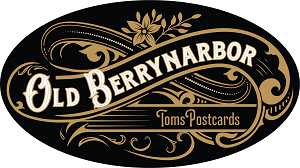 Artwork: Angela Bartlett
OLD BERRYNARBOR - 157
Delbridge's Furnished Apartment - Hills Farm
I was very fortunate to obtain
this postcard within the last few days.
It has a 1911 Berrynarbor August 9th postmark over a green half pence
stamp.

Between
Moules Farm and Hills Farm four children, two boys and two girls, can be seen
on the unmade road surface. They are
probably on their way home from Berrynarbor School. The message on the reverse of the card says:
"This is the spot where we have landed and this the house
where we are residing. The surrounding scenery is simply
glorious. I don't know if you will like Ilfracombe we were there
yesterday, but I much prefer Berrynarbor. If the weather is
not too bad look out for some cream. I have just had a bath,
am sitting on a rock surrounded by hills, hope the weather
will continue fine. Love Nora"
The
postcard is addressed to Mrs. Pearce, 66 Barclay Road, Leytonstone, Essex. I
was especially pleased to be able to get this card as it is yet another, but
not numbered, photographic postcard by William Garratt.
In
the Watermouth Estate Sale held at Bridge Hall, Barnstaple, on the 17th August
1920, it sold as Lot 24 by the auctioneer, John Smale, F.A.I.
, as follows:
Lot 24. Hill Cottage Tenement.
A Highly Desirable SMALL HOLDING comprising
A Slated Dwelling House, Outbuildings, and about 7a.3r.37p.*
Of Pasture and Arable Lands, in the occupation of Mr. W. Draper as a Yearly Lady-day Tenancy and Mr. W.H. Howard as a Michaelmas Tenant.
There are some good Building Sites and a good Spring of Water on this Lot.
The Apportioned Title on this Lot is 16s.6d.
* 7 acres, 3 rods, 37 perches
The
auction price commenced at £300 and sold for £760 with the completion date set
for 25th March 1921.
Tom
Bartlett,
Tower Cottage, September
2015
e-mail: tomandinge40@gmail.com
40

41
WELCOME HOME SOCIAL,
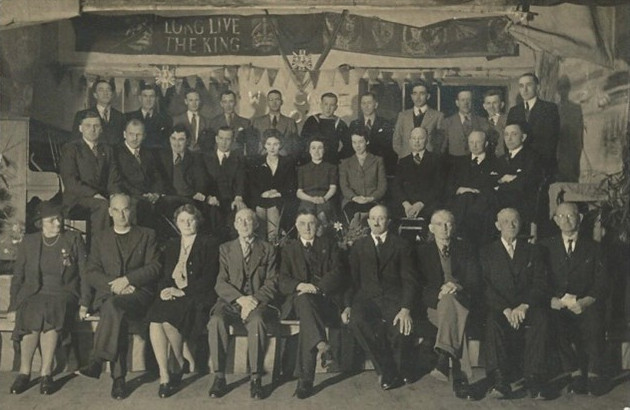
Tom's postcard of the Welcome Home Social 1946 in the August issue has stirred memories and brought up new names as well as correcting others.
It is thought that the men in the two back rows were in the forces [were the ladies, too?], and the front row councillors and members of the church.
Given, but not there, are Bill Smith and Les Bowen. Those shown as Gary and Christopher Huxtable are most likely Huxtables, but not Gary or Christopher. It is thought that Sheila Draper is in fact her sister Winnie, and Sheila is not pictured. Joan Horren is Joan Orrin.
The lady on the right of the Rev. Mylchreest [far left of the picture] is
Mrs. Mylchreest and the lady on his left is Kathleen Richards.
Other thoughts are that the man in the centre of the front row is
Charlie Ewings and on his left Fred Rice [not Sid Perrin] and that it is
Capt. Adams not Lewis Smith on the far right of the picture.
To the right of the sailor is Bill Richards. Between Winnie Draper and Frank Challacombe is possibly Stanley Jones and the man shown as Hedges is George Hobbs.
Can anyone else confirm names or tell us more?
42
| 











































